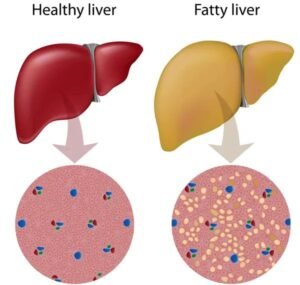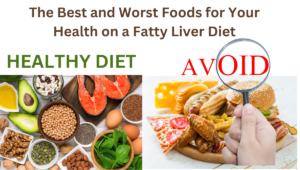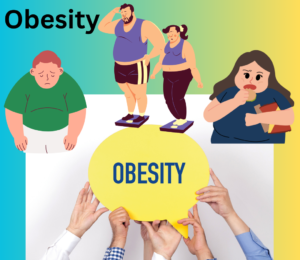Fatty Liver Disease Affecting Many Kids: A Growing Health Concern Parents Shouldn’t Ignore
🧒 Overview: An Unspoken Epidemic in Children
We frequently picture adults with liver illness, perhaps someone who has a history of obesity or alcoholism. However, fatty liver disease in youngsters is a developing health issue that is going unnoticed.

Indeed, Metabolic-Associated Fatty Liver Disease (MAFLD), formerly known as Non-Alcoholic Fatty Liver Disease (NAFLD), is now being identified in children, some of whom are as young as 8 or 10 years old. In addition to being real, this ailment is rapidly getting worse as a result of dietary and lifestyle changes as well as rising childhood obesity rates.
In this piece, we will examine:
The true nature of fatty liver disease in children
Why it’s growing in popularity
Warning indicators to watch out for
Parental actions to stop and reverse it
Let’s explain this expanding problem in plain, understandable terms.
📘 What is Childhood Fatty Liver Disease?
A disorder known as fatty liver disease occurs when children’s liver cells accumulate excessive amounts of fat, not as a result of alcohol consumption but rather of metabolic issues like insulin resistance, obesity, and poor diet.
This fat accumulation:
strains the liver
has the potential to induce inflammation
may eventually cause liver damage.
Serious liver problems, such as the following, may develop if treatment is not received:
Steatohepatitis, or inflammation of the liver
Fibrosis, or scarring of the liver
Cirrhosis, or irreversible liver damage
🚨 Why Is Fatty Liver Disease Increasing in Children?
The primary offenders are:
Fast food, processed snacks, and sugary drinks are all part of a poor diet.
Absence of exercise: A sedentary way of life brought on by much screen time
One of the main causes of metabolic problems is obesity.
Fat accumulation results from insulin resistance, a disorder in which the body is unable to use insulin efficiently.
Some concerning data: Fatty liver disease may now affect up to 10% of children worldwide.
The risk rises to 40% or higher among youngsters who are fat.
MAFLD is the most prevalent liver disease among children in the United States.
This is no longer a rare condition. It is quickly rising to the top of the list of chronic ailments that school-age children face.
👶 Who’s Most in Danger?
Kids who are:

Obese or overweight
possess a family history of fatty liver or diabetes
are idle or spend a lot of time in front of screens
Eat a lot of fried food, sweets, and refined carbohydrates.
possess ailments such as high cholesterol, type 2 diabetes, or polycystic ovarian syndrome (PCOS).
Even youngsters of average weight may be impacted if they have genetic predispositions or bad eating habits.
🔍 Symptoms and Signs to Look for
Since most children don’t initially exhibit any noticeable symptoms, fatty liver disease is frequently referred to as a “silent” ailment. Only standard blood testing or imaging for another issue might reveal it.

However, some red flags may be:
Persistent weariness or exhaustion
Pain in the abdomen, particularly in the upper right section
Unaccounted-for weight gain
Dark areas of skin, particularly on the armpits or neck, are indicative of insulin resistance.
Liver enlargement discovered during a medical examination
increased levels of the liver enzymes ALT and AST in blood tests
The prevention of liver damage depends on early identification.
🧪 How is a child’s fatty liver diagnosed?
Typically, doctors start with:
Blood tests: To detect high levels of liver enzymes, such as ALT and AST
Ultrasound: A non-invasive method of identifying liver fat
FibroScan: Determines the stiffness of the liver (for fibrosis)
Biopsies or MRIs (in rare, severe situations)
Even in the absence of symptoms, physicians frequently evaluate for fatty liver in children who are overweight or have other risk factors.
Why Children’s Fatty Liver Is Dangerous
Fatty liver disease in children can develop subtly and dangerously over time, in contrast to many medical conditions that disappear with maturity. It could result in:
Diabetes type 2
Heart conditions
elevated blood pressure
Fibrosis of the liver
By early adulthood, cirrhosis
Rare instances include liver failure or the requirement for a liver transplant.
Due to exhaustion, challenges with body image, and social isolation, children with MAFLD may also experience emotional problems.
Early awareness and lifestyle modifications are so essential.
🍎 How Can Parents Assist? Avoidance and Reversal
The good news? Children’s fatty liver is frequently curable, particularly in its early stages.
Parents can help in the following ways:
1. Nutritious Food Practices
Limit sugar-sweetened drinks (juices, sodas).
Steer clear of processed snacks and junk meals.
Increase your intake of lean proteins, whole grains, fruits, and veggies.
Replace fried food with healthy fats like almonds and olive oil.
💡 Advice: Include children in grocery shopping and cooking to establish a family tradition of eating well.
2. Promote Regular Exercise
It’s best to move for at least 60 minutes each day.
It may involve walking, dancing, riding, or participating in sports.
Don’t spend more than two hours a day on screens.
💡 Advice: Consider trekking, family walks, or enjoyable indoor exercise activities.
3. Routine Medical Examinations
Monitor your weight, waist circumference, and BMI.
Keep an eye on your cholesterol and blood pressure.
If there are risk factors for your child, get a liver screening.
4. Assistance with Behavior
Some children may require assistance with:
Issues with body image
Encouragement to modify eating patterns
Controlling stress or emotional eating
It might be very beneficial to speak with a pediatric nutritionist, counselor, or health coach.
5. Set an Example
Children imitate the actions of adults. Children will follow if parents emphasize sleep, eat healthier, and exercise more.
Recall that a healthy child comes from a healthy home.
🥗 Example of a Kid-Friendly Liver-Friendly Meal Plan Day
This is a straightforward, delectable, and liver-safe daily schedule:
Breakfast:
Banana slices and chia seeds on oatmeal
A glass of almond milk without sugar
Snack:
Slices of apple with peanut butter on a spoon
Lunch:
Lean chicken, tomato, lettuce, and whole grain bread
On the side, carrot sticks
Snack:
A handful of berries and yogurt or almonds
🍛 Dinner:
Tofu or fish on a grill
Quinoa and broccoli steamed
A little bowl of fruit
💧 Hydration: Drink plenty of water! Steer clear of bottled juices.
Have You Considered Medicines?
There isn’t a single medication licensed for children with fatty livers at the moment. Changing one’s lifestyle is the first line of treatment.
Rarely, medical professionals might think about:
In older children with verified NASH (liver inflammation), vitamin E (as an antioxidant)
Drugs for related disorders such as diabetes, cholesterol, or insulin resistance
However, once more, the most effective treatments for childhood MAFLD are food and exercise.
📈 The Greater Good: What Communities & Schools Can Do
It takes societal support to prevent fatty liver disease in children; it is not simply a household concern.
Schools can: Offer wholesome school lunches.
Encourage physical education every day.
Minimize sugary snack vending machine usage.
Communities can create parks and playgrounds that are safe.
Provide nutrition education initiatives.
Make more affordable and accessible healthy food options available.
We can shield the future generation from this avoidable illness if we band together.
Concluding Remarks: Let’s Pay Attention to the Signs
There is fatty liver disease in youngsters, and it is getting worse. However, it can be stopped.
Parents may help reverse this trend and provide their children with a healthier future by raising awareness, screening early, and making little daily changes in their diet and activities.
Consult your physician if your child is in danger. Start simple by turning off the screens, having a nutritious meal, or taking a quick evening stroll. Every little step counts.

